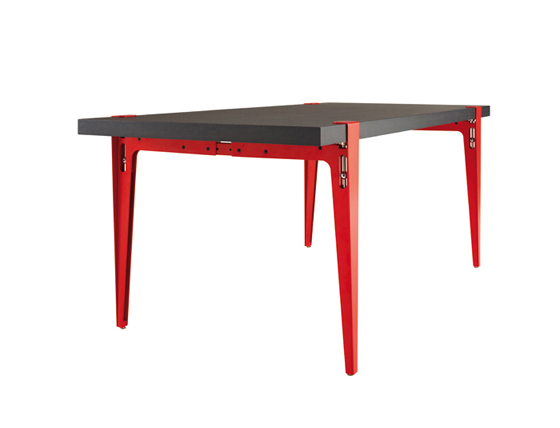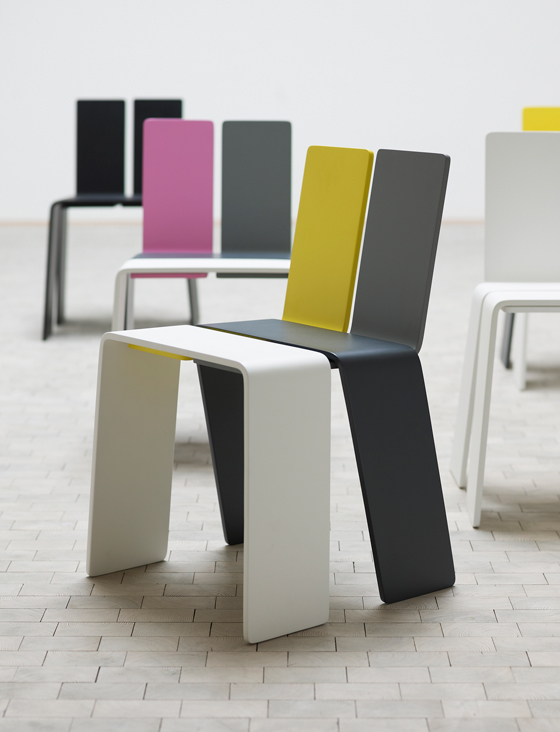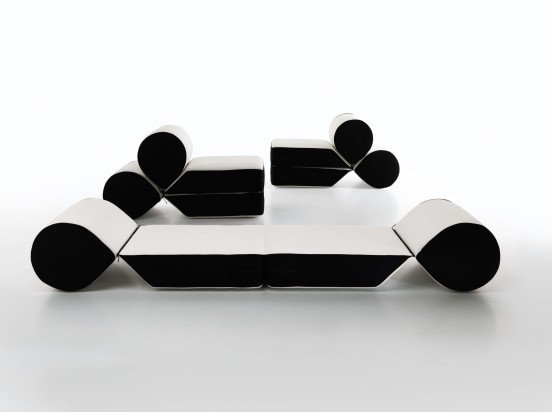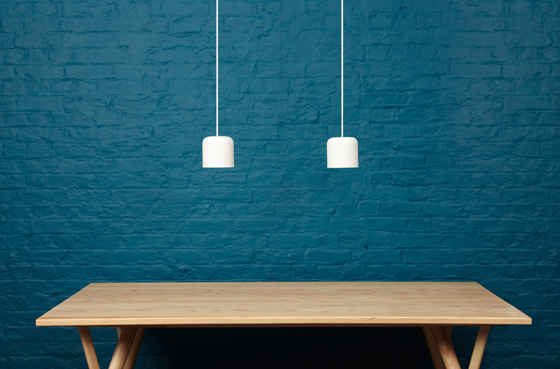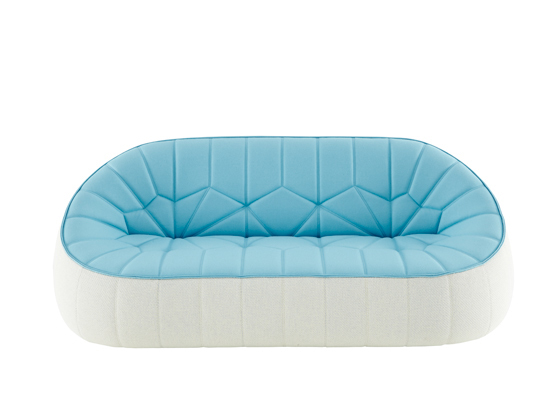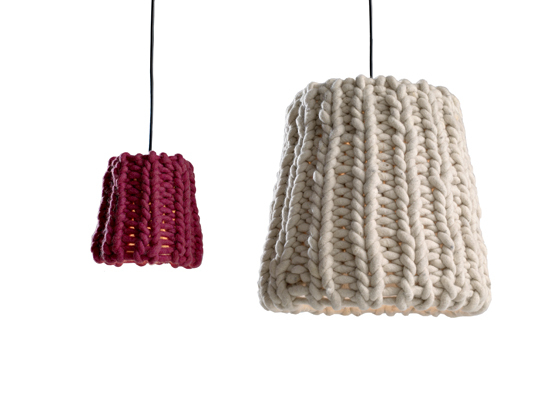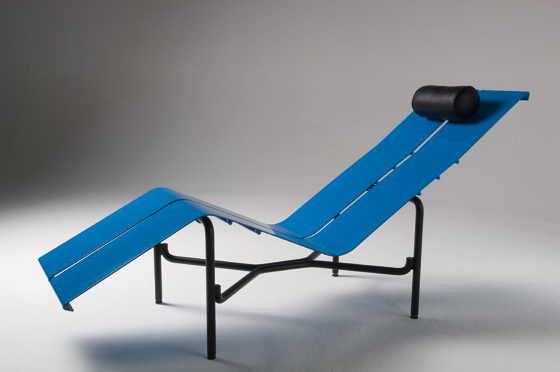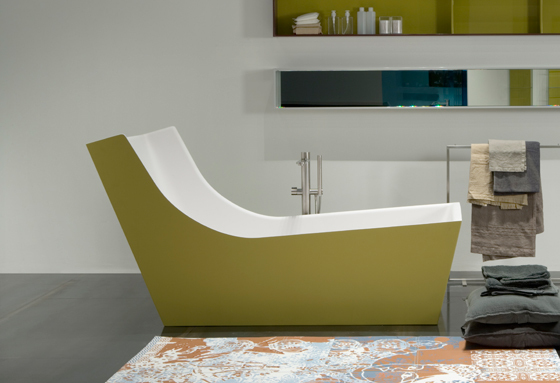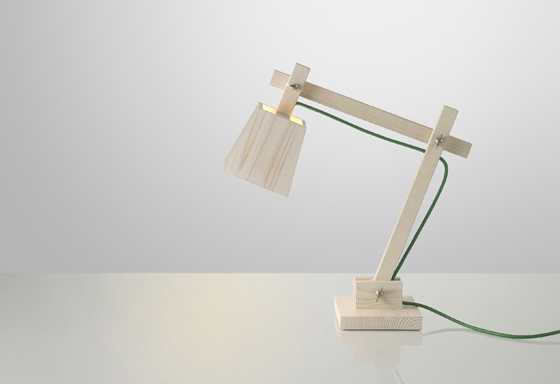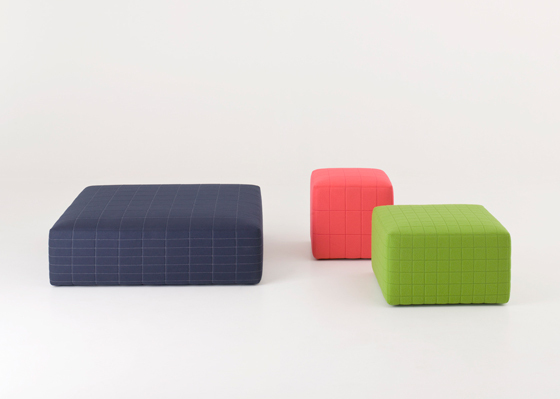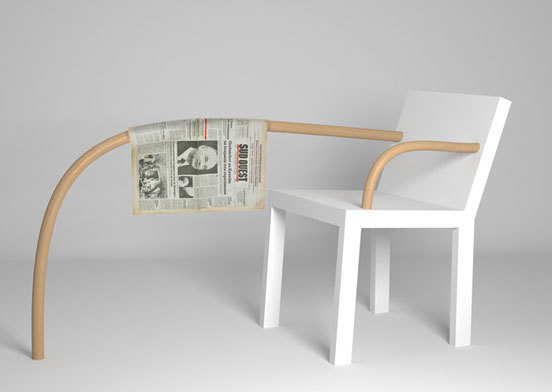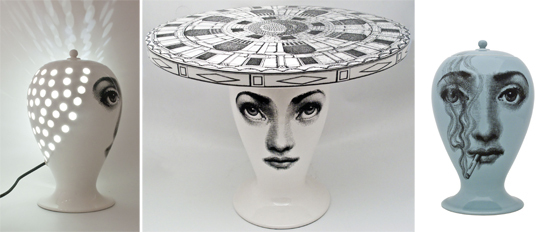MAISON&OBJET PARIS 2010
Text by Simon Keane-Cowell
Zürich, Switzerland
10.02.10
Architonic presents a selection of some of the novelties presented at this year's design fair in Paris
Novelties. The word comes from the Old French 'novelté', which is is rather fitting when it comes to surveying some of the best new products shown at this year's Maison & Objet design fair in Paris. The general mood at the Parc des Expositions was buoyant, compared to last year. Architonic can vouch for having seen a lot of broad, white-toothed smiles.
Maison & Objet has gained a reputation in the last few years as being a fair that attracts some of the big-name design brands, who like to put on an impressive show at their stands, as well as a very international, design-savvy visitorship.
Architonic hot-footed it from the imm cologne to do the rounds and more in the city of love (and design). Here are just some the highlights...
'T.U.' table by Philippe Nigro for Ligne Roset_
Philippe Nigro is one of the many young French designers to have been picked up by Ligne Roset in the last few years. Also featuring at Maison & Object as part of Philippe Starck's Intramuros-sponsored exhibtion of the work of ten young French 'créateurs' who best represent the new generation of designers in the country, 'T.U.' or 'Table Universelle' offers (in theory, at least) the user an object that is perenially useful. Beyond the utilitarian, Jean Prouvé aesthetic of its base, the piece allows any kind of table top to be fitted to it, meaning, of course, endless customisation and recycling possibilities. The prototype for 'T.U.' was funded by VIA, the Paris-based organisation founded to support and promote young French design.
'Expo Chair' by KiBiSi (Kilo Design/Big/Skibsted Ideation) for Hay_
In the tradition of furniture designed for a specific architectural space (think Mies van der Rohe's 'Barcelona Chair' for the German Pavilion at the 1929 Ibero-American Exposition, Ernest Race's 'Antelope' chair for the 1951 Festival of Britain, or, more recently, BarberOsgerby's 2005 'De La Warr Pavilion Chair' for Erich Mendelsohn and Serge Chermayeff's Modernist English-seaside masterpiece) Hay presented a chair designed by KiBiSi especially for the Danish Pavilion at the 2010 World Expo in Shanghai. The piece is fabricated in power-coated plywood. Hay have yet to decide which colours it will be produced in.
'Drop' seat/daybed by Leonardo Perugi for Cerruti Baleri_
Joe Colombo-esque 'Drop', designed by architect Leonardo Perugi, has a reduced, highly geometric form, which invites the user to configure it according to their mood. The drop-like shape of the head pillow has both an aesthetic and a practical function: it structurally locks the seat in its closed position, without the need for any fastening device. In interview with Architonic at Maison et Objet, Perugi explained that 'Drop' 'is something you can use as a suit. You wear this piece. It's for you, your body, your life. You can use it to create new situations. It's not a fossil or a museum piece. It's to be used every day. Like a garment.'
'Josiah' pendant lights by Terence Woodgate for SCP_
The modest size of British design manufacturer SCP's 'Josiah' pendant lights makes perfect sense when you consider that they have been designed around the latest, low-energy compact flourescent lamps. Their form is highly reduced, and made more delicate by the fact that they are fabricated from bone china in the traditional home of industrial pottery manufacturing, Stoke-on-Trent. When illuminated they emit a soft glow; when unlit their high-gloss surface is legible.
'Ottoman' by Noé Duchaufour Lawrance for Ligne Roset_
This isn't the first collaboration between Noé Duchaufour Lawrance and Ligne Roset. His 2009 'Roseau' ceramic vase was also produced by the leading French brand. The all-foam 'Ottoman' sofa and footstool clearly display a Moroccan influence, expressed in their form and in their quilted upholstery, yet articulate a very contemporary set of colours. Roset describe the project as being characterised by a sense of 'comfort and wellbeing'.
'Notime', 'Nightime' and 'Finetime' clocks by Farrow Design for SCP_
Leading graphic-design agency Farrow's first foray into product design has produced a series of clocks that are (yes, you've guessed it) highly graphic. Given that timepiece design is (or should be) about visual communication, it's no wonder that the British design practice have chosen this particular object-type to experiment with. That said, the three clocks in the collection vary in terms of their legibility. No prizes for guessing that 'Notime' makes the user work the hardest...
'Granny' pendant lamp by Pudelskern Design for Casamania_
There’s somewhat of a contradition at the heart of Casamania’s new pendant lamp ‘Granny’, designed by Pudelskern Design and shown at the recent Maison & Objet design fair in Paris: a light (and, ergo, heat) source that sports a natural-wool covering. The aesthetic is industrial-design-meets-toothy-craft. While the wool comes from Tyrolian sheep, the lamp itself is knitted by hand in the Netherlands. You’ll be pleased to hear the material is fire-retardant.
'PMR' chaise longue by Paulo Mendes da Rocha for Objekto_
It's probably safe to say that the chaise longue isn't an object-type that sits at the top of the list when it comes to its actual daily use. But for some reason it continues to attract the imagination of product designers. Perhaps it it due to its sculptural nature, echoing the form of the body; or because of its memorable exploration by such Modernists as Charlotte Perriand and Lily Reich. At any rate, Paulo Mendes da Rocha has created a extremely elegant, thin steel-sheet chaise longue, whose real beauty becomes apparent when it is viewed in profile: the piece turns into a highly graphic set of lines and a dot.
'Cuna' bath tub by Carlo Colombo for antoniolupi_
In contrast to the fluid stuff that you fill it with, Carlo Colombo's bath for Italian manufacturer antoniolupi is an exercise in stark, angular geometry. The invitiation to the user to spend some quality time in this tub is expressed through its high backrest. Made of Cristalplant, a hard-wearing material, the design is available in a number of colours, yet is most striking visually in a two-colour option.
'Wood Lamp' by TAF Architects for muuto_
There's something rather provisional-looking in TAF Architects' 'Wood Lamp'. Both material and form of the piece are suggestive of the language of prototype. But the unapologetically low-tech lamp, designed by Gabriella Gustafson and Mattias Ståhlbom, is very much in production, manufactured by Danish outfit mutto.
'Quartier' collection of ottomans by Claesson Koivisto Rune for Tacchini_
It's perhaps little surprise that a multidisciplinary design/architecture office like Claesson Koivisto Rune should create a set of ottomans that rely for their aesthetic on the idea of the grid. These building-block-like objects feature exposed stitching that criss-crosses in parallel lines, underpinning the overall notion of construction. Any sense of harshness is mitigated, however, by the warmth of the colour options available.
'Kippford' collection of hooks by Jon Harrison for Thorsten van Elten_
London-based independent design manufacturer and distributor Thorsten van Elten (he of the 'Pigeon Light' and 'Antlers' wire coat hanger) has produced a range of wall-mounted hooks by Jon Harrison, which reference the kind of metalware found in sailing boats. The hooks, strangely like semaphore when viewed a group, are evocative of a gentler time and place, particularly in their polished brass option.
'Hypertrophy Chair' by NOCC_
As part of Paris-based design practice NOCC's ‘Radiation’ collection, which plays on the idea of mutation, the ‘Hypertrophy Chair’, with its extended armrest, offers a piece whose functionality extends beyond the seat's archetypal purpose as something to sit on. The user can decide whether they want to use the chair as newspaper rack, a coat hanger, and so on.
'Themes and Variations' by Barnaba Fornasetti for Bitossi Ceramiche_
Italian ceramics manufacturer Bitossi Ceramiche has continued its collaboration with designer Barnaba Fornasetti, developing the 'Themes and Variations' collection that is been producing since 2004. This graphically led series, which comprises such objects as lamps, urns, tables and bookends, features a set of enigmatic, sometimes melancholic, female faces that have been applied to the surface of the ceramics. The resulting play between two and three dimensions lends the collection its fascinating nature.
